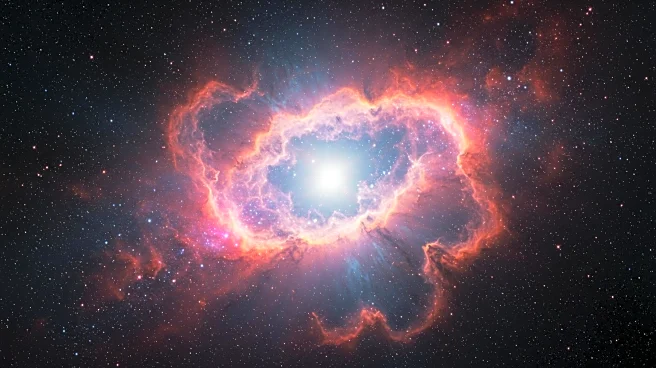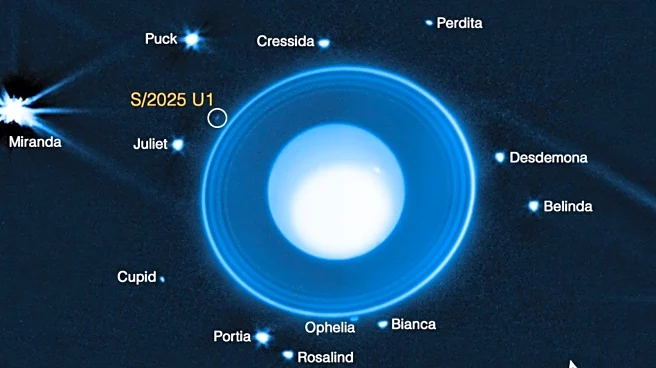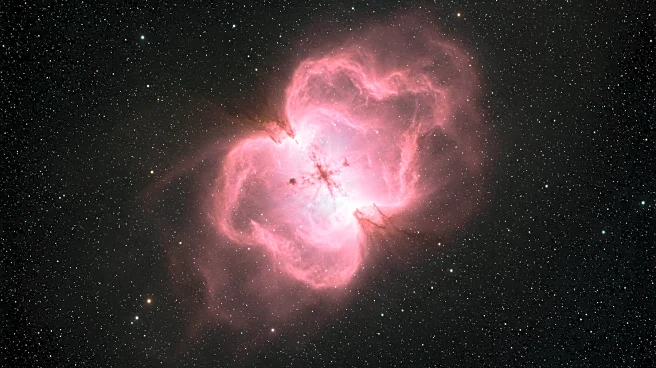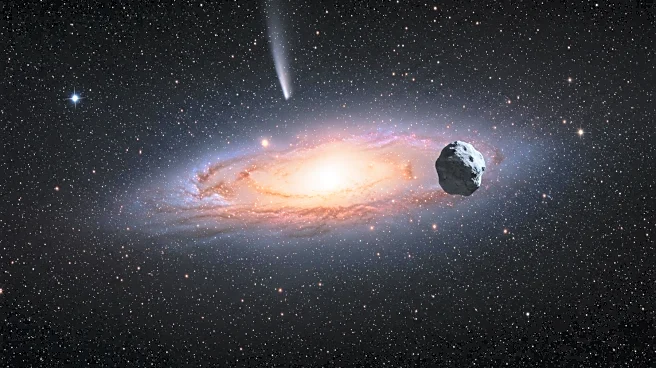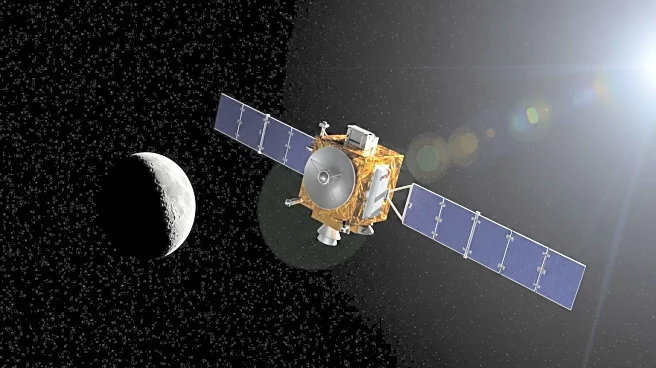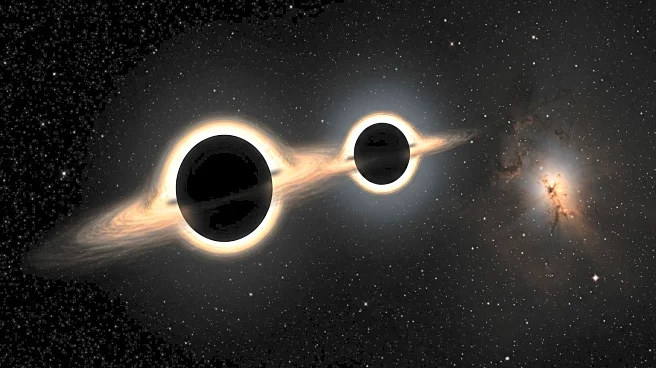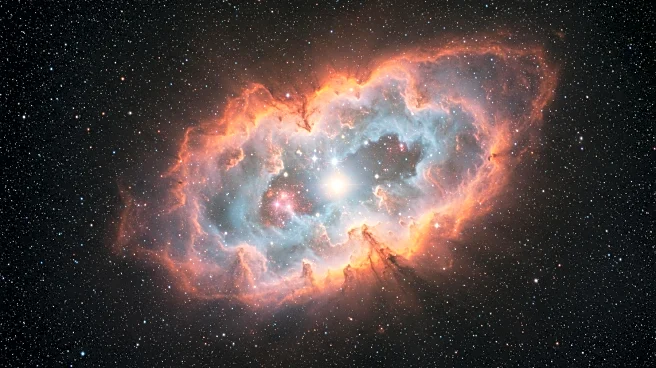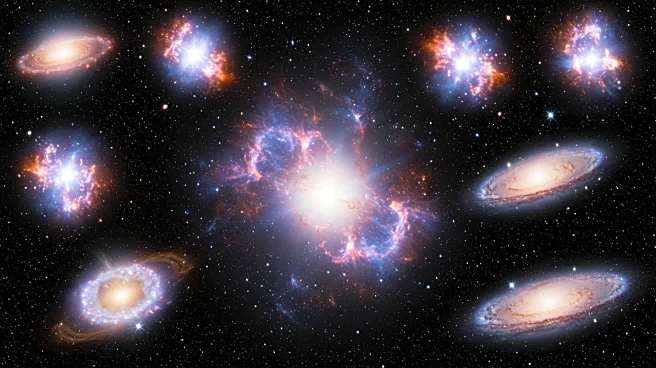Rapid Read • 7 min read
NASA's Chandra X-ray Observatory has provided new insights into the 'cosmic hand' nebula, a formation created by a pulsar, a type of neutron star. This pulsar, located in the Milky Way, is a powerful electromagnetic generator resulting from a supernova explosion. The nebula, known as MSH 15-52, is about 1,700 years old and stretches approximately 150 light-years across. Recent studies have combined radio data with X-ray images, revealing discrepancies in light wavelengths that suggest a complex interaction between the pulsar wind and supernova debris. The pulsar, spinning seven times per second, emits high-energy particles that form a bubble of glowing gas, interacting with the surrounding supernova remnants.
AD
The study of MSH 15-52 offers significant insights into the processes that create high-energy particles, some of which may become cosmic rays reaching Earth. Understanding these interactions can enhance knowledge of cosmic phenomena and the lifecycle of stars. The findings also highlight the capabilities of combining different observational techniques, such as radio and X-ray imaging, to uncover the complexities of astronomical objects. This research could lead to advancements in astrophysics and improve models of pulsar wind interactions, contributing to a broader understanding of the universe.
Further research is expected to focus on detailed computer models to better understand the interactions within the nebula. Scientists aim to explore the mechanisms behind the pulsar's high-energy emissions and their impact on the surrounding environment. Continued observations and data analysis will likely provide more clarity on the formation and evolution of such cosmic structures, potentially leading to new discoveries in the field of astrophysics.
AD
More Stories You Might Enjoy
